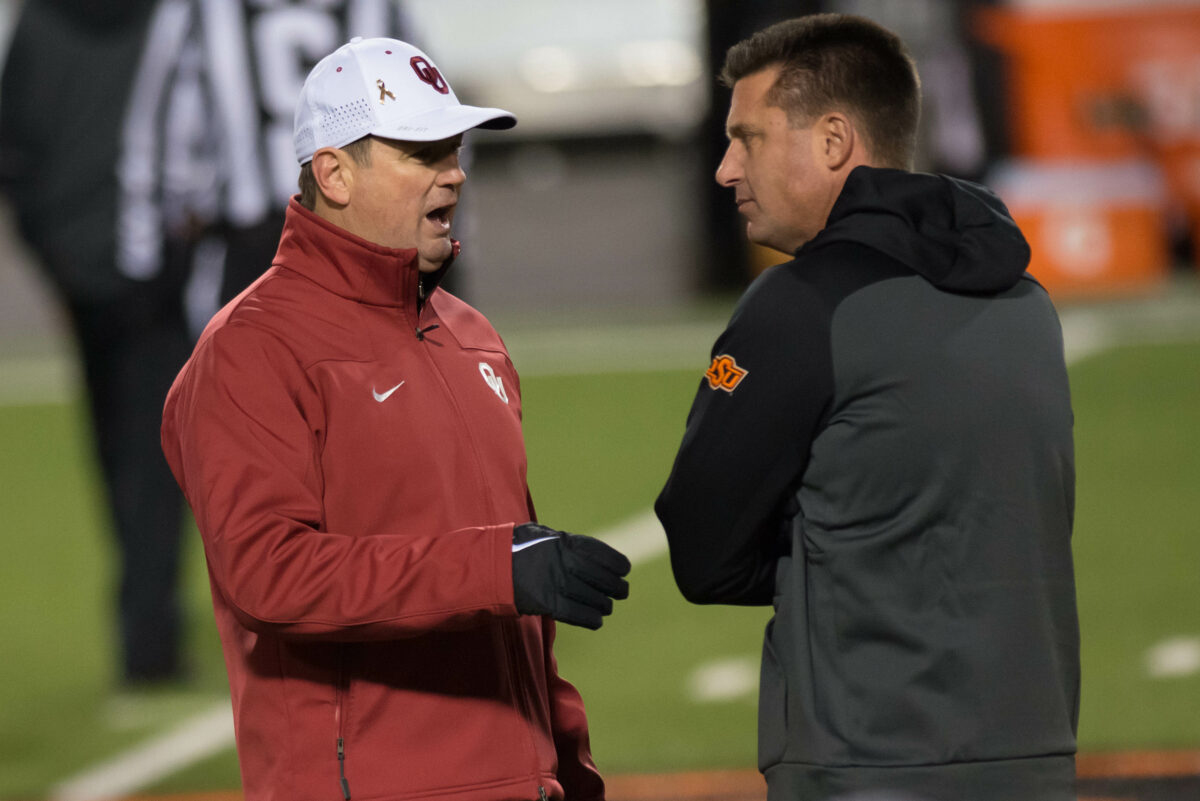While the move to allow players to earn income off of their name, image, and likeness wasn’t a popular one in all circles, the sentiment when it first passes state legislatures was that it was long overdue and a good thing for the athlete in college athletics.
They’d be able to earn income by doing autograph signings or advertising for companies, things that were punishable infractions prior to the NIL era. What it’s turned into, however, isn’t what was intended.
Spencer Rattler getting a couple of cars for doing appearances at a local car dealership or talking about the dealer on his social media pages, that was the intention of NIL. Players in programs getting opportunities.
Over the last 10 months, it’s become something more than that. Texas and Texa A&M have used NIL in their recruiting efforts. The Aggies had the top recruiting class in the country and arguably in the history of modern recruiting. And Texas had NIL deals ready and waiting for offensive linemen who committed to the Longhorns.
A bigger issue revealed itself late last week and over the weekend as it was reported that Biletnikoff award-winning wide receiver Jordan Addison of Pitt was offered $3 million to enter the transfer portal and then go to USC. He wasn’t even in the portal yet and someone was attempting to lure him away from the Panthers.
There are a host of problems, but the Addison situation is what’s really sparked conversations over the last few days. In his weekly call with “The Rush” on 94.7 The Ref in Norman Tyler McComas and Teddy Lehman talked with Bob Stoops about the ever-changing landscape of college football and the impact of NIL.
Is Bob Stoops worried about the future of college football?
He answered that today on The Rush with @TedLehman11 and @Tyler_McComas pic.twitter.com/6JKMKOD7sn
— The REF (@KREFsports) May 3, 2022
“The bottom line, be careful what you wish for,” Stoops said. “It’s totally different than what we’ve been used to. My opinion, we need a new leadership group. The NCAA and the way it’s been has really failed overall. Who goes by rules anymore and how they enforce it just seems so ambiguous. Look at Oklahoma State and their basketball program and what happened to them and so wrong… And then other teams, nothing happens to them. I’m not pointing fingers at anyone, it happens in football too. I’ve been very disillusioned for a long, long time on the NCAA. Just through my football years and how they enforce things or don’t.”
The NCAA’s inconsistent approach to infractions has long been a discussion in collegiate athletics. They seemingly pick and choose when they want to investigate possible violations and how they apply the rulebook when infractions are found or even self-reported as in Oklahoma State’s case.
The lack of leadership from the NCAA on how to handle NIL is a big reason for the state of college football. Though they’re trying to put the cat back in the bag, it may be too late for them to do anything meaningful. In a story from Ross Dellinger of SI, the powers that be in college football are looking to enact a resolution that would reinforce the understanding that boosters are extensions of the university and potential violations could be met with disciplinary action. But many wonder if the NCAA would be up for any legal action the boosters or the universities take in response to any infractions levied.
The response from the universities in this will be interesting to follow over the next decade. Coaches have already hinted at the idea that the big names in college football are likely to create it’s own league sometime in the next two decades. And Bob Stoops is the next to mention it as a way to combat the NCAA’s lacking leadership.
“Maybe we need to have a new league of Power Five teams that have their own league and their own commissioner and governing board,” Stoops shared with The Rush. “From afar, it looks like right now nobody has control of anything. It’s just have at it. I don’t know if that’s ever good. Even the NFL has rules, restrictions, guidelines, salary caps, all of that. Right now, I don’t know if college football has any of that, so have at it.”
Oklahoma and Texas joining the SEC and Nebraska going to the Big 10 a decade ago were landscape-changing moves for college football. Blue blood programs moving away from traditional rivalries to cement their place with two of the best conferences in college football. And it wouldn’t be surprising to see further realignment take place after the dust settles over the next few years.
As college football teams attempt to navigate the new world order of college football, something has to change. This isn’t what NIL was intended to be for the student-athlete. But until the NCAA does something about it, athletes, “have at it.”
Contact/Follow us @SoonersWire on Twitter, and like our page on Facebook to follow ongoing coverage of Oklahoma news, notes, and opinions. Let us know your thoughts, comment on this story below. Join the conversation today.
